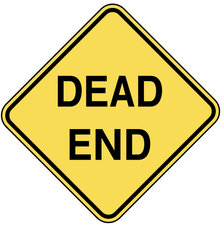Identifying the Tools Your Business Needs to Shift into High Gear
Trade shows are great places to get revved up. Surrounded by new and familiar faces, fresh designs and a positive vibe, my creative juices always start racing. No, I’m not driving toward a disclosure about hidden design aspirations. Rather, my mind fills with business ideas and growth opportunities on behalf of the exhibiting companies. For the newbies who have just left the starting line, I can already envision ways they could expand on their concepts, protect their proprietary ideas and boost their visibility. And for the more established brands, I imagine a myriad of ways for them to shift into a higher gear.
Too often, my enthusiasm hits the skids when I share my vision with the brand managers who, weary from circling this particular track one too many times, lack the will to consider new paths. And who can blame them? Most of these business owners are a one-man pit crew, shouldering the responsibility for design, production, marketing and sales. By the time they hit market, they’re running on fumes. The last thing they want to hear is my big ideas for how they can capitalize on their brand names or design archives through licensing deals, private-label collaborations or splashy marketing. As I accelerate through my pitch, I see their eyes narrow and their shoulders hunch. And before I can even finish, I hit not a speed bump, but a full head-on collision when they say, “And when would I have time to do that?”
Switching Lanes
It’s true, time — and energy — are the fuel for innovation. In that moment, it’s clear these leaders are on E, having driven themselves as hard as they can. And they’re doing it all in the face of the unyielding economic meltdown that threatens to derail them through smaller margins and fewer sales. The irony of course is the dwindling profits are the signposts that change is necessary. But it seems tough times have thrown up mental roadblocks for brand owners, curbing their enthusiasm for new courses of action. Mired as they are in the daily minutiae of running their businesses, they can’t conceive of the effort it would take to ramp up in new, unfamiliar ways.And I get it. Working harder is not an option. But what if there were a way for them to work smarter? Ultimately, as the business owner, you are the creative engine for the company, keeping it moving in interesting and profitable directions. But if you’re constantly distracted and depleted by everyday tasks, rather than navigating your way to increased sales, you could be veering into trouble.
Over the years, I’ve noticed many businesses in the children’s industry could use a tune-up to maximize performance. The first step I would suggest is for owners to park themselves in a quiet corner to evaluate their core skills and the skills of those around them. They might be surprised to find that some of the tasks that keep them so preoccupied would be better performed by somebody else, freeing them up for their main function: visionary. While it’s admirable to have a nose-to-the-grindstone work ethic, true leaders have to also have a bit of a head-in-the-clouds mentality — one that prompts them to map out new routes to success.The next step would be to re-evaluate their company structure. If you’re the owner who manages everyone and everything directly, doesn’t empower your staff to make decisions and insists on babysitting every aspect of the business, no wonder your engine is overheating. To give yourself that time and space to dream and chase opportunities, you’ll need to develop layers of management that create accountability and ownership among the staff and a measure of freedom for you. Ideally your company structure should look like multiple pyramids, representing sales, marketing, design, production, shipping and customer service, with trusted point people at the top of each. This organization would give you license to spend some time networking, thinking, investigating and yes, dreaming.
Reading the Signs
For those of you who are literally still doing it all yourself, you’ve probably already sped past many signs indicating you need help. Now before you say, “I can’t afford it,” consider this: For the significant amount of time, energy and sweat equity you’re putting into your line, do you feel that you’re getting the best return? Or are you simply careening out of control? If you can’t justify the investment from a workload standpoint, consider the industry knowledge and specialized skills the right employees or consultants could add to your business.That was my message to an industry friend who had for some time been feeling that her business was going in reverse. To save money, she did everything herself, which meant five years after launching, she was in a tailspin. Hoping to head off the inevitable crash, I finally told her what I really thought: It was either time to outsource some tasks in order to grow or to pull the plug and devote more time to her family, day job, health and sanity. I can assure you it wasn’t what she wanted to hear but it was an honest assessment. With two hands, 24 hours in the day, many other responsibilities and no background in the garment or retail industries, she had gone as far as she could go on her own.
Like this designer, I know many children’s apparel vendors and retailers have never owned a business before let alone a children’s fashion company, so there’s a lot to learn. Simply hoping to pick up the necessary skills along the journey might take its toll in the form of time and money. Bringing on a consultant or employee with specialized skills could help steer the company clear of unnecessary detours and expenditures.Instead of spinning your wheels, adopt a company structure that allows you to stay energized and ready for the many opportunities on the road to success. And remember, while you are the driving force behind your vision, your more important role is navigator.
I look forward to running into you on the show circuit and learning how you’ve revitalized and recharged for the long haul. Until then, join me for an industry chat on Twitter on Sept. 7th at 8 p.m. EST. On Twitter, follow me @caletha_style or search for #kidsbiz.
About Caletha Crawford
Caletha Crawford is a children’s apparel consultant who has spent more than eight years covering the industry, most recently as editor in chief of Earnshaw’s magazine. Caletha has a unique perspective on the concepts, designs and companies that resonate with retailers and consumers. Consulting with both established brands as well as start-up companies in this market allows her to use her passion for helping designers bolster the business side of their labels. Her services include public relations, marketing, branding and social networking. In an effort to usher in the next generation of design talent, she also teaches and produces special events at Parsons The New School for Design. For more information, visit www.calethacrawford.com or email















